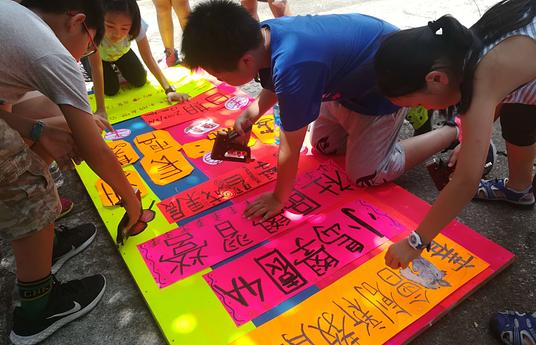Children today are increasingly disconnected from nature and often perceive climate change as a distant crisis. Learn Around Nature (LAN) responds to this by reconnecting children with their environment through hands-on learning and local problem-solving, embedding climate literacy into everyday academics—especially in fast-urbanizing cities like Bengaluru.
Learn Around Nature (LAN) begins with academic concept visualisation, where students develop foundational spatial skills—such as reading directions, latitudes, and longitudes—through hands-on mapping activities. In Phase 1: Discover, students trace Bengaluru’s transformation using topographic maps from 1973 and 2011, observing shifts in water bodies, roadways, and green spaces. They connect these observations with lessons in geography and environmental science to understand the ecological cost of urbanization. In Phase 2: Define & Imagine, students identify civic issues—such as waste management, transport access, or biodiversity loss—by conducting community research and surveys. In Phase 3: Prototype & Act, they design local solutions, consult stakeholders like RWAs, and present their work through exhibitions using posters, models, and storytelling. LAN blends science, geography, and civics into joyful, place-based learning—empowering students to become active, informed climate leaders
Learn Around Nature (LAN) began with a biodiversity workshop for 30 students at a community center, followed by a 6-month pilot in one school. Encouraged by its success, we scaled it into a year-long program now running in 6 schools and 3 community centers, reaching 250 children in 2024–25. The curriculum, vetted by researchers and educators, is academically strong and highly engaging. With this solid foundation, we are developing teacher training modules to scale LAN. Each year, 30 educators will be trained to integrate nature-based learning into classrooms, reaching 700+ students. Over the next 2–3 years, we aim to expand to 10,000 children across 3 cities by training facilitators, collaborating with civic bodies, and adapting our low-tech, locally rooted approach.
Interested schools, educators, or organizations can reach out to https://www.thickettales.com/ via our website. We offer teacher training with complete hand-holding—session plans, materials, and assessment rubrics. Educators are trained in facilitation, layered questioning, gamified learning, and designing place-based, hyper-local projects.



